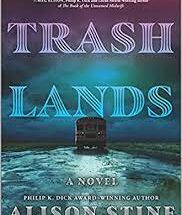
Image source: Ritesh Nayak
This week, we learn why creatives who say no are the most productive. (So hard to do in reality.) We also dig in to the representations of poverty in literature, the writing lessons of Hamilton, and one author’s perspective on the italicization of non-English words in fiction. And to give all those novelists out there a fright, one author shares two versions of the time her “mother-in-law stopped speaking to [her] because she was so appalled by the graphic sexual content of the book” — one funny and one true.
- Want to write more? Just say no. “A Hungarian psychology professor once wrote to famous creators asking them to be interviewed for a book he was writing. One of the most interesting things about his project was how many people said ‘no.'”
- “While some progress has been made with regard to working for—or at least acknowledging the dire need for—gender and racial diversity in literature, thanks to the work of groups like VIDA and We Need Diverse Books, nothing has been done to champion class diversity in writing. Alison Stine discusses the representation of poverty in literature.
- I’m only mildly obsessed with the Broadway hit Hamilton. Okay. I’m egregiously obsessed. But I’m not alone. Here are three things “Hamilton” does that you might try in your own writing: Work! The Writing Lessons of Hamilton.
- Gina Frangello tells the behind the scenes story of what happened when her mother-in-law confused her fiction for non-fiction in Risky Writing: The Story I Always Tell and Never Tell.
- In this short video, Daniel José Older responds to a common question he’s asked of his books:


